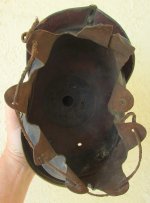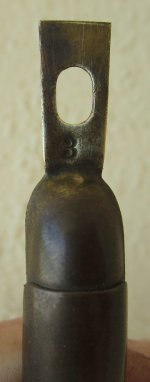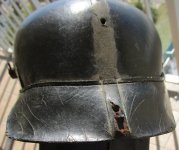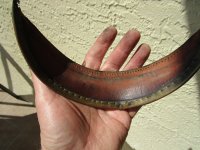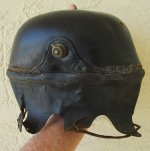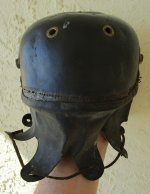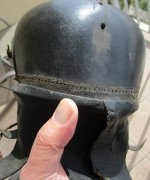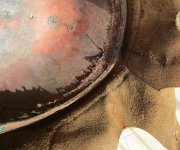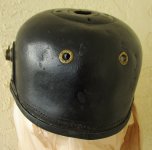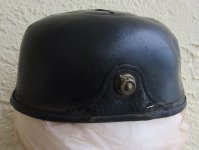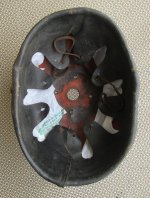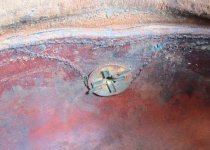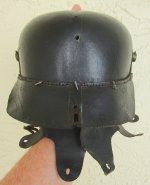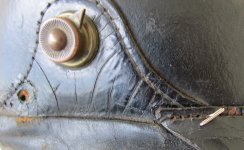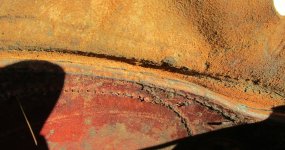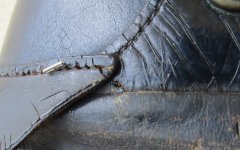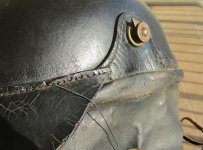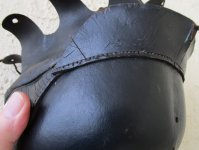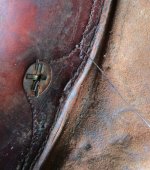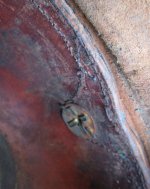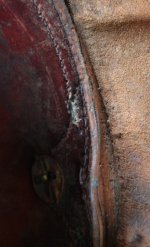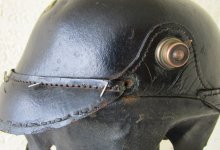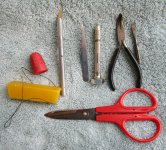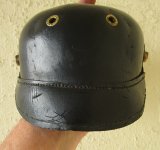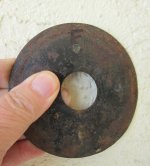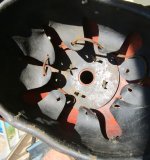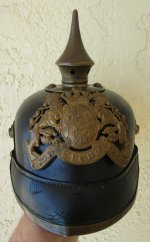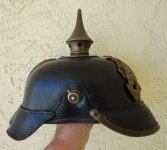I received this Bavarian M96 a week ago, time to get it done! The helmet is very dirty inside and both visors have come loose. As is typical, the shell has shrunk inward popping the cotton thread along the stitch line. The collapsing shell as we shall see, has also split the brass visor trim on the inside edge. Again, this is a very common problem with pickelhauben and we have seen many with the trim split into 2 halves or even with trim completely gone. This happens to both M95's and M15's. The "before" pictures:
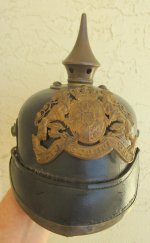
Bavaria did not adopt this style of pickelhaube until 1896. My thanks to Kaiser's Bunker for this information. :thumb up:
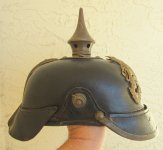
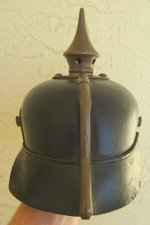
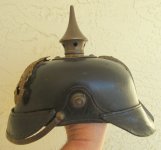
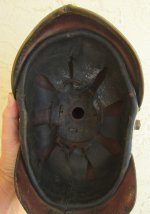
The helmet has an excellent heavy pre war liner along with its original drawstring. Leather thickness is measured in ounces...the typical haube liner is made from 2 oz. sheep skin.
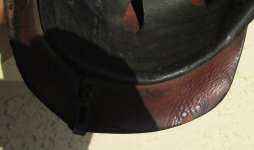
The helmet is stamped 181R...the 18th Infantry Regiment. In my experience, the Bavarians favoured stamping their Rgt. numbers rather than "ink stamps" used by the Prussians and other states. The 18th Infanterie Regt Prinz Ludwig Ferdinand (Landau) II Bayer Armee Korps (KB). The Regt was formed in 1881 and based at Landau. There is no date that I can see in the shell but there is an ink makers stamp which may become visible when the shell is cleaned inside.

Bavaria did not adopt this style of pickelhaube until 1896. My thanks to Kaiser's Bunker for this information. :thumb up:




The helmet has an excellent heavy pre war liner along with its original drawstring. Leather thickness is measured in ounces...the typical haube liner is made from 2 oz. sheep skin.

The helmet is stamped 181R...the 18th Infantry Regiment. In my experience, the Bavarians favoured stamping their Rgt. numbers rather than "ink stamps" used by the Prussians and other states. The 18th Infanterie Regt Prinz Ludwig Ferdinand (Landau) II Bayer Armee Korps (KB). The Regt was formed in 1881 and based at Landau. There is no date that I can see in the shell but there is an ink makers stamp which may become visible when the shell is cleaned inside.

